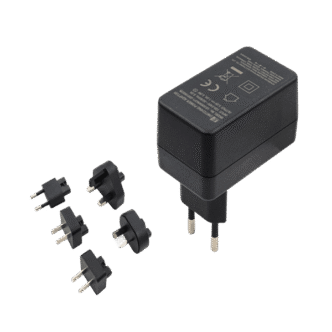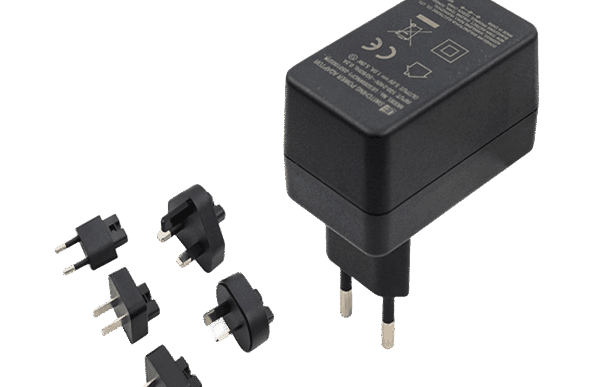The world of trading has evolved significantly over the past decade, primarily driven by the rise of cryptocurrencies and the enduring popularity of forex trading. For traders, accurate signals can make the difference between a profitable trade and a losing one. This article delves into the intricacies of accurate cryptocurrency signals and forex signals, offering a comprehensive guide to understanding their importance, how they work, and the best practices for using them effectively.
Understanding Trading Signals
Trading signals are essentially recommendations or alerts for buying or selling assets, based on various analytical methods. These signals can be generated by human analysts, algorithms, or a combination of both. They play a crucial role in helping traders make informed decisions, especially in the volatile markets of cryptocurrency and forex.
Cryptocurrency Signals
Cryptocurrency signals are specific to the digital asset market, providing insights into potential trading opportunities. Given the highly volatile nature of cryptocurrencies, accurate signals can help traders navigate this unpredictability and capitalize on market movements.
Sources of Cryptocurrency Signals
Technical Analysis: Many signals are derived from technical analysis, which involves studying price charts and using indicators like moving averages, Relative Strength Index (RSI), and Bollinger Bands to predict future price movements.
Fundamental Analysis: Some signals are based on fundamental analysis, which looks at the underlying factors affecting a cryptocurrency’s value, such as news events, technological advancements, and regulatory developments.
Sentiment Analysis: This approach analyzes the sentiment of market participants, often using data from social media, forums, and news sources to gauge the overall mood and potential market direction.
Forex Signals
Forex signals are alerts or recommendations for trading currency pairs in the foreign exchange market. The forex market is the largest and most liquid financial market in the world, operating 24 hours a day, five days a week.
Sources of Forex Signals
Technical Indicators: Similar to cryptocurrency signals, forex signals often rely on technical analysis. Indicators like Fibonacci retracements, MACD, and moving averages are commonly used.
Economic Data: Forex signals can also be generated based on economic data releases, such as GDP reports, unemployment rates, and interest rate decisions from central banks.
Market Sentiment: Analyzing the sentiment of traders and market participants can also provide valuable forex signals, helping traders understand the prevailing market mood.
The Importance of Accurate Signals
Accurate trading signals are vital for several reasons. They can help traders make timely decisions, manage risk more effectively, and increase their chances of making profitable trades. In both cryptocurrency and forex trading, where markets can move quickly and unpredictably, having access to reliable signals can be a significant advantage.
Enhancing Decision-Making
Trading signals provide actionable information that can guide traders’ decisions. For example, a buy signal might indicate that a particular cryptocurrency or currency pair is expected to rise in value, prompting traders to take a long position.
Risk Management
Accurate signals also play a crucial role in risk management. By providing clear entry and exit points, signals help traders minimize losses and protect their capital. This is especially important in the highly volatile cryptocurrency market, where prices can change rapidly.
Increasing Profitability
Ultimately, the goal of using trading signals is to increase profitability. Accurate signals help traders identify profitable opportunities and avoid potential pitfalls, leading to more successful trades over time.
How to Evaluate Signal Providers
Not all signal providers are created equal, and it’s essential to evaluate them carefully before relying on their recommendations. Here are some key factors to consider:
Track Record
One of the most important factors to consider is the provider’s track record. Look for providers with a history of delivering accurate and profitable signals. This can often be verified through user reviews, performance reports, and third-party verification services.
Transparency
Transparency is crucial when choosing a signal provider. Providers should be clear about their methodologies, how signals are generated, and the success rates of their recommendations. Avoid providers that make unrealistic promises or lack detailed information about their processes.
Risk Management
Good signal providers should also offer guidance on risk management. This includes providing stop-loss and take-profit levels with their signals, helping traders manage their risk and protect their capital.
Customer Support
Reliable customer support is another essential factor. Providers should offer prompt and helpful support to address any issues or questions that traders might have.
Best Practices for Using Trading Signals
Using trading signals effectively requires more than just following the recommendations blindly. Here are some best practices to ensure you get the most out of your signals:
Combine Signals with Your Analysis
While trading signals can provide valuable insights, it’s essential to combine them with your analysis. This might involve using your technical or fundamental analysis to confirm the signals before acting on them.
Start Small
If you’re new to using trading signals, start small. Use a demo account or trade with a small amount of capital to test the signals and get a feel for how they work before committing more significant funds.
Stay Informed
Markets are constantly changing, and it’s essential to stay informed about the latest developments. Keep up with news and events that might impact the markets you’re trading in, and be ready to adjust your strategies accordingly.
Manage Your Risk
Always prioritize risk management when using trading signals. Use stop-loss orders to limit potential losses and avoid risking more than you can afford to lose on any single trade.
Common Pitfalls to Avoid
While trading signals can be incredibly useful, there are some common pitfalls that traders should be aware of:
Over-Reliance on Signals
One of the biggest mistakes traders can make is over-relying on signals. Signals should be used as a tool to inform your trading decisions, not as a substitute for your analysis and judgment.
Ignoring Risk Management
Failing to manage risk properly is another common pitfall. Always use stop-loss orders and never risk more than you can afford to lose.
Chasing Losses
Chasing losses by trying to recover from losing trades quickly can lead to even more significant losses. Stick to your trading plan and avoid making impulsive decisions based on emotions.
The Future of Trading Signals
As technology continues to evolve, the future of trading signals looks promising. Advances in artificial intelligence and machine learning are likely to lead to even more accurate and sophisticated signals. These technologies can analyze vast amounts of data quickly, identifying patterns and trends that human analysts might miss.
AI and Machine Learning
AI and machine learning can enhance the accuracy of trading signals by continuously learning from new data and adapting to changing market conditions. This can result in more reliable and timely signals, helping traders make better decisions.
Blockchain Technology
Blockchain technology also holds potential for improving trading signals, particularly in the cryptocurrency market. By providing a transparent and tamper-proof record of transactions, blockchain can help ensure the accuracy and reliability of trading data.
Increased Accessibility
As technology becomes more advanced, trading signals are likely to become more accessible to retail traders. This democratization of trading tools can help level the playing field, giving more traders the opportunity to benefit from accurate signals.
Conclusion
Accurate cryptocurrency and forex signals are invaluable tools for traders looking to navigate the complexities of these markets. By providing actionable insights, helping with risk management, and increasing profitability, these signals can significantly enhance a trader’s performance. However, it’s crucial to choose reliable signal providers, combine signals with personal analysis, and always prioritize risk management. As technology continues to advance, the future of trading signals looks bright, promising even more sophisticated and accurate tools for traders.
7
High-Quality Cryptocurrency Signals and Forex Signals: A Comprehensive Guide
In the dynamic world of trading, high-quality signals can be the key to success, guiding traders to make informed and profitable decisions. Both cryptocurrency and forex markets present unique opportunities and challenges, making the quality of signals crucial for traders. This article explores what constitutes high-quality cryptocurrency signals, their significance, and best practices for utilizing them effectively.
Understanding Trading Signals
Trading signals are indicators or alerts generated to suggest buying or selling opportunities in financial markets. These signals can be based on various analytical methods, including technical analysis, fundamental analysis, and market sentiment.
Cryptocurrency Signals
Cryptocurrency signals are specifically tailored for digital asset markets. They provide recommendations on when to buy or sell cryptocurrencies based on a range of factors.
Sources of Cryptocurrency Signals
Technical Analysis: This method involves analyzing price charts and using indicators like moving averages, RSI, and Bollinger Bands to forecast future price movements.
Fundamental Analysis: Signals derived from fundamental analysis consider the underlying factors affecting a cryptocurrency’s value, such as news, technological advancements, and regulatory changes.
Sentiment Analysis: This approach gauges the mood of market participants by analyzing data from social media, forums, and news outlets to predict market directions.
Forex Signals
Forex signals are recommendations for trading currency pairs in the foreign exchange market. The forex market is the largest and most liquid financial market globally, operating 24/7.
Sources of Forex Signals
Technical Indicators: Common technical indicators used to generate forex signals include Fibonacci retracements, MACD, and moving averages.
Economic Data: Signals can be based on economic data releases, such as GDP reports, unemployment rates, and interest rate decisions by central banks.
Market Sentiment: Analyzing the sentiment of traders and market participants can also provide valuable forex signals, helping traders understand the prevailing market mood.
The Importance of High-Quality Signals
High-quality trading signals are essential for several reasons. They help traders make timely decisions, manage risk more effectively, and enhance the likelihood of making profitable trades. In both cryptocurrency and forex trading, where markets can be highly volatile, having access to reliable signals is a significant advantage.
Enhancing Decision-Making
High-quality signals provide precise and actionable information that guides traders’ decisions. For instance, a buy signal might indicate that a specific cryptocurrency or currency pair is expected to increase in value, prompting traders to take a long position.
Risk Management
Quality signals play a crucial role in risk management. They offer clear entry and exit points, helping traders minimize losses and protect their capital. This is especially important in the volatile cryptocurrency market, where prices can change rapidly.
Increasing Profitability
Ultimately, the goal of using high-quality trading signals is to increase profitability. Reliable signals help traders identify profitable opportunities and avoid potential pitfalls, leading to more successful trades over time.
Evaluating Signal Providers
Not all signal providers offer high-quality signals. It’s crucial to evaluate them carefully before relying on their recommendations. Here are some key factors to consider:
Track Record
One of the most important factors is the provider’s track record. Look for providers with a history of delivering accurate and profitable signals. This can often be verified through user reviews, performance reports, and third-party verification services.
Transparency
Transparency is critical when choosing a signal provider. Providers should clearly explain their methodologies, how signals are generated, and the success rates of their recommendations. Avoid providers that make unrealistic promises or lack detailed information about their processes.
Risk Management
Good signal providers should also offer guidance on risk management. This includes providing stop-loss and take-profit levels with their signals, helping traders manage their risk and protect their capital.
Customer Support
Reliable customer support is another essential factor. Providers should offer prompt and helpful support to address any issues or questions that traders might have.
Best Practices for Using Trading Signals
Using trading signals effectively requires more than just following the recommendations blindly. Here are some best practices to ensure you get the most out of your signals:
Combine Signals with Your Analysis
While trading signals can provide valuable insights, it’s essential to combine them with your analysis. This might involve using your technical or fundamental analysis to confirm the signals before acting on them.
Start Small
If you’re new to using trading signals, start small. Use a demo account or trade with a small amount of capital to test the signals and get a feel for how they work before committing more significant funds.
Stay Informed
Markets are constantly changing, and it’s essential to stay informed about the latest developments. Keep up with news and events that might impact the markets you’re trading in, and be ready to adjust your strategies accordingly.
Manage Your Risk
Always prioritize risk management when using trading signals. Use stop-loss orders to limit potential losses and avoid risking more than you can afford to lose on any single trade.
Common Pitfalls to Avoid
While high-quality trading signals can be incredibly useful, there are some common pitfalls that traders should be aware of:
Over-Reliance on Signals
One of the biggest mistakes traders can make is over-relying on signals. Signals should be used as a tool to inform your trading decisions, not as a substitute for your analysis and judgment.
Ignoring Risk Management
Failing to manage risk properly is another common pitfall. Always use stop-loss orders and never risk more than you can afford to lose.
Chasing Losses
Chasing losses by trying to recover from losing trades quickly can lead to even more significant losses. Stick to your trading plan and avoid making impulsive decisions based on emotions.
The Future of Trading Signals
As technology continues to evolve, the future of trading signals looks promising. Advances in artificial intelligence and machine learning are likely to lead to even more accurate and sophisticated signals. These technologies can analyze vast amounts of data quickly, identifying patterns and trends that human analysts might miss.
AI and Machine Learning
AI and machine learning can enhance the accuracy of trading signals by continuously learning from new data and adapting to changing market conditions. This can result in more reliable and timely signals, helping traders make better decisions.
Blockchain Technology
Blockchain technology also holds potential for improving trading signals, particularly in the cryptocurrency market. By providing a transparent and tamper-proof record of transactions, blockchain can help ensure the accuracy and reliability of trading data.
Increased Accessibility
As technology becomes more advanced, trading signals are likely to become more accessible to retail traders. This democratization of trading tools can help level the playing field, giving more traders the opportunity to benefit from high-quality signals.
Conclusion
High-quality cryptocurrency and forex signals are invaluable tools for traders looking to navigate the complexities of these markets. By providing actionable insights, helping with risk management, and increasing profitability, these signals can significantly enhance a trader’s performance. However, it’s crucial to choose reliable signal providers, combine signals with personal analysis, and always prioritize risk management. As technology continues to advance, the future of trading signals looks bright, promising even more sophisticated and accurate tools for traders.












